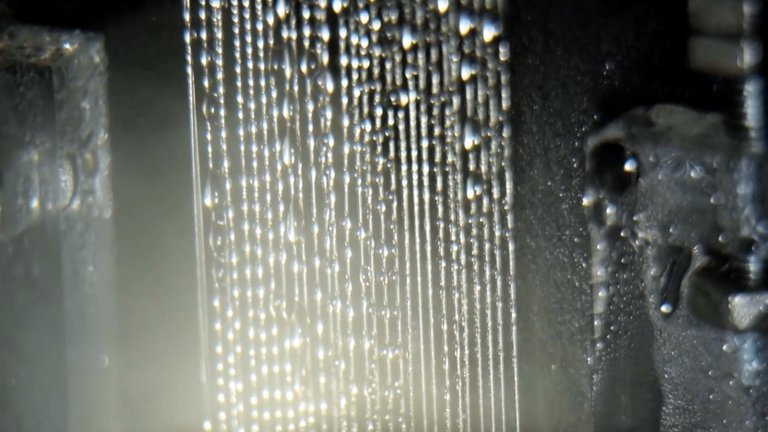
If you’re as old as I am and like the same music, you may recognize that title. It was a line uttered by Kurt Cobain just before launching into a song in 1993 (minus the word “fog”, which I added for this post). A band called the Meat Puppets had just joined Nirvana on stage for some songs and they were taking a while getting their guitars ready. Thus, that “What are they tuning, a harp?” comment appeared at the beginning of a song on Nirvana’s MTV Unplugged album.

Source: MTV.com
Why am I writing about harps? Because that is what scientists at Virginia Tech call their latest invention, the Fog Harp. It is a device that pulls water from air. When fog is blowing through an area, this device can harvest that water from the air. It’s like sticking a big fishing net up in the air and catching the tiny water droplets. Given that many areas of the world have limited access to fresh water, I think the Fog Harp is a great title for a great invention (more on that below).
Nature Did It First
But as with many other inventions, nature did it first. To prove this point, I give you the Coast Redwood. Redwoods and other related coniferous trees (pines, firs, spruce, etc.) are some of nature’s most efficient water harvesters. They can pull water from thin air, or at least from the foggy air that often fills the skies for months at a time along the coasts of Northern and Central California.

Below is a time lapse video of fog rolling through this region. You can see what amazing potential there is for trees to collect some of the water from this air:
Underneath the tree’s canopy on a foggy day with the wind blowing, you’d be excused for believing you are in the middle of a Pacific storm. When the low fog clouds sweep in, you often cannot feel the water at all because it’s not condensing into droplets; fog is like a cloud of cool steam. But under a big conifer tree such as a redwood, on a very foggy night, it is quite literally raining as much as in any storm. That’s how much water is being captured and dripped down towards the tree’s roots.
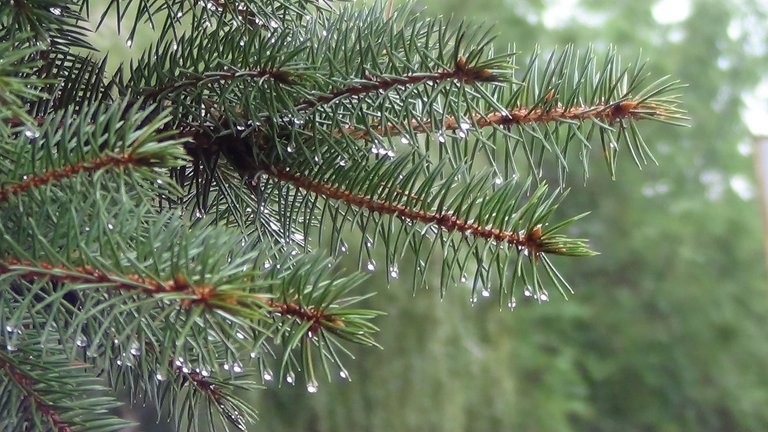
I know because I used to live near the foggy coast of Northern California in a house that had a huge redwood tree looming overhead. It was quite frightening during a real storm with high winds. For all the noise that tree made, we were lucky that nothing more than small branches ever fell down because the tree was much larger than the house.
But that tree made plenty of summer days seem like stormy days by raining down water from the coastal fog that came in each morning and evening. If it had never rained a day there, that tree would have had plenty of water because the thin foggy air gave it everything it needed. And I didn’t need to water the garden for more than a few days per year either, since that tree did it for me.
Some of these trees are so big you can drive through them.

Source: Visitredwoods.com
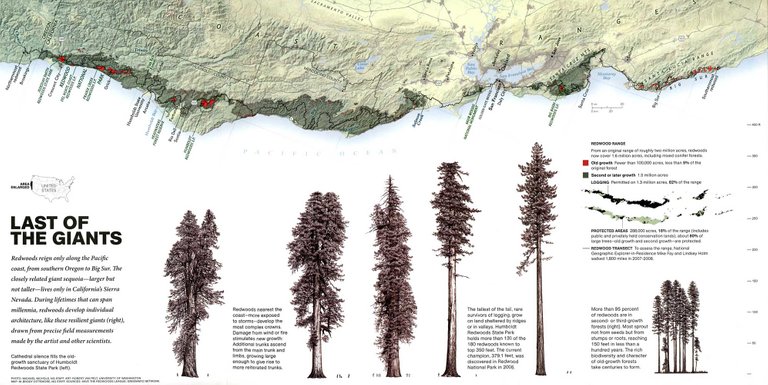
While the closely-related sequoia trees occur inland in the Sierra Nevada mountains, the range of coast redwoods is very limited today. Source: National Geographic.
How do these trees capture so much water from the air? They use their branches and needles as a harvester. Redwoods first appeared just after the time of the dinosaurs and some of these individual trees have been alive for millennia. The oldest ones are 2,200 years old. It is amazing to stand beneath these old growth giants and realize that a few of them may have been standing there since before the time of Julius Caesar, Jesus Christ, or the prophet Muhammad.
Here is another picture of the needles a coniferous relative of the redwood tree (I think this one is a pine). Look at how the needles trap even the smallest water droplets and let them combine until their weight drops them right down to the trees’ roots. It’s a brilliant system and also very simple.
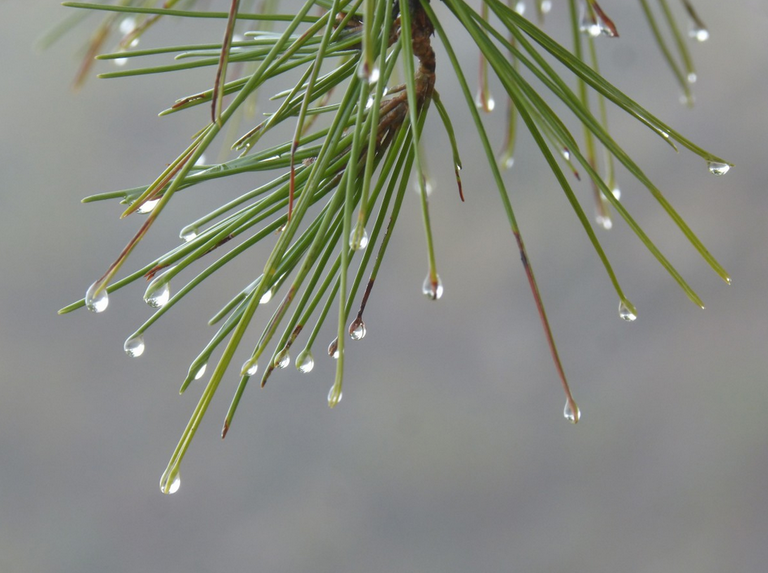
Water Harvesters Made by Humans
Using a similar system, humans have been collecting water from fog for many years. In areas that are arid but get some fog, the simplest method is to sink two posts into the ground and string a mesh net between them. The wind blows the fog through. This method is used in Morocco and in the Andes of South America where fog often forms.
Small water droplets are caught in the mesh. Gravity forces them to combine with others to form larger drops that fall to the ground, where they can collect in a trough or container. It’s like putting the same net in a river until enough fish swim into it that you have a meal. The best fishing grounds are coast-facing hills or mountain ranges with a propensity for foggy weather where that marine layer is blown towards shore by prevailing winds.
Here is a fog harvesting project in Lima, Peru:
There are more complex designs as well, such as multi-story towards of nets, cube designs, swirly designs, and so forth, some of which may catch slightly more than the simple method of hanging a net curtain on two poles.
The Fog Harp
One of the problems with traditional collectors is that they cannot catch too much at any one time. Either they are not very efficient at delivering small drops downward or water gets stuck because of the horizontal mesh lines, which impedes the ability to collect more droplets from fog. So, scientists at Virginia Tech University worked to find the most efficient design.
This turned out to be a set of wires which are held taught by a frame. Each vertical wire can catch water from even tiny droplets in the foggy air, delivering them down to the reservoir where the water is collected. The overall efficiency is better than a simple catch net.
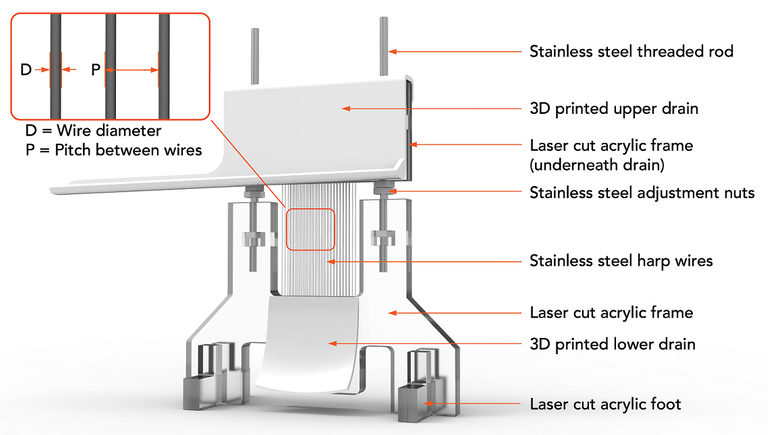

Fog Harp images courtesy of Virginia Tech University.
In fact, the Fog Harp can collect three times as much water as other systems. As with any new invention, it probably needs more testing, but this is not an elaborately complex device. And once the Fog Harp is produced as a workable product, hopefully the cost will be affordable for people in developing countries. These fog harps could help deliver clean drinking water to areas that may not have it, as long as they have fog.
What sound does this harp make when it’s tuned? Drip, drip, drip.

Sources:
https://en.wikipedia.org/wiki/San_Francisco_fog
www.climatetechwiki.org/content/fog-harvesting
https://www.cnn.com/style/article/fog-harp-virginia-tech/index.html
https://vtnews.vt.edu/articles/2018/03/fog-harp-increases-water-collection-capacity.html
Top image shows fog harp and is courtesy of Virginia Tech University. Other images are public domain unless indicated.
That was a good read. I find it so interesting how some of the best inventions are just ways in which humans create devices that mimic nature.
When I was reading the first few paragraphs I was thinking, “there are already lots of plants that do this” and then right on cue, you talked about how nature does this.
I loved going through BBC’s “Blue planet” (not sure on the name) documentary and then they released a second one. Nature is full of amazing things we can learn from and has adapted so well to life on earth.
I recently listened to a radio lab podcast titled “smarty plants” I recommend giving this a listen if you are interested in some of the marvelous things in nature that we don’t really understand.
Tip! Hide
Absolutely. I love those Blue Planet and earth documentaries also. The world we live in is quite inspiring.
that tech. might have some negative effect, if we use it in a large scale it could disrupt the nature of water cycle and could potentially create a climate change.
Perhaps, if it's on a large scale, though I doubt these amounts of water make too much difference to the climate at the moment. Also, if you watch that video clip from the existing project in Peru, they have to hire water trucks to bring water up to those towns. That's plenty more pollution, etc. which worsens climate issues. Plus, when people use water, it's for consuming or washing, and either way that water does not disappear from the environment; it is cycled back in, probably not far from where it was when it was taken from the clouds. I don't know the overall impact of this, but I suspect it's minimal unless done on a much larger scale.
Hello @donkeypong a great greeting, I am new to your blog and observing several of your publications I was delighted with them, I liked your blog and your publications as you publish a bit of everything, and write information that is very informative, educational and above all very smart. Personally I love sports, so every post you made about sports I liked a lot, like the others too, your blog is fantastic. I will follow you and from now on be aware of your posts, to continue enjoying the good things that you make us arrive in your publications. For now I say goodbye wishing you have an excellent weekend and that you are very well. I send you a great greeting from Venezuela.
Amazing read... I had no idea about the invention of the scientists at the Virginia Tech University but I've seen water collected on plants like that.
Good stuff.
But I have a concern, we are known to overdo things as humans. Now, I'm pretty sure these plants take just the right amount of water from the fog, I fear this manmade invention might take more than it should leave the atmosphere, thus upsetting the balance of nature (I don't really have much if science knowledge in this regard, so forgive me if it seems baseless)
That seems to be a common concern in these comments. I don't know the answer, but I suspect the amounts taken are relatively minor overall, unless this technology were to be deployed on a much larger scale.
This would be really handy in the northern part of my country during the harmattans.
At that time of the year, there is no rain and fog usually rolls over the land at night and early in the morning before the sun comes out.
It would be quite beneficial as the northern part of my country does a lot of farming but do not have much water compared to other parts of the country.
Thanks for the comment. I was not familiar with the term, so I looked upo "harmattans". Sounds like this kind of tech might be useful there.
yes, greatly @donkeypong. I actually moved to the north recently. I am from the southern part of Nigeria, so I am used to seeing rivers flowing all time of the year as well as rains falling heavily during the rainy season.
The north doesn't have such luxuries. When the dry season starts lots of their water reserves drops and since they are mostly farmers producing farm produce like tomatoes, pepper, onions, millet, etc the lack of water affects their output. A tech like the fog harp would definitely be a good support for farmers.
Also the Sahara is slowly eating into arable land and areas that used to be green are slowly turning to dust due to the lack of proper irrigation as well as trees. Also cattle has played a role in the deforestation. So indeed, a fog harp, any tech to improve water supply would do farmers and cattle herders in the north great good.
I think I am repeating myself but the post has given me much to think of as I have never really thought about it... Lol. Thank you for reading comment, I enjoyed the post.
Your explanation about adapting to the environment, especially treating water and air is very complete. Water has always been a major issue in many places in world. Including in Indonesia. In fact, in an area in Indonesia, namely in Gunung Kidul, Yogyakarta, if the dry season, people have to buy water with expensive prices. Gunung Kidul is one of the areas in Indonesia that has water problems. Until now the problem has not been resolved. Thank you for sharing mr @donkeypong
To an outsider like me, your country seems so green and lush, but it's also very diverse geographically, so that's interesting to hear of the dry area you mention. Maybe this can help, but it does depend on there being some moisture in the air.
There are many villages in Indonesia which are experiencing severe drought every year. Usually the drought is against in July, August, September. Gunung Kidul, Yogyakarta, including one of the worst areas experiencing drought. People lack water. Plants are also dry. The drought is still a threat in some villages. That is because Indonesia is also hit by the dry season. This news can be one of the references to drought in Indonesia Thousands of Central Java villages threatened by drought.
The tech does look interesting, but i have a slight worry, i can probably solve it by doing some extra research and maybe my worry is completely stupid and out of place but what if you start taking so much water from the air that at some point you remove the moisture from the air and the air turns hard and dry like desert winds? but that can't possibly happen right? as i said, pretty cool tech but i'll do the research but thats the first thing that came to my mind as i read this for some reason.
That was an awesome invention extracting water from air or I may say from the fog. I think, just a little modification of this technology, it can be used in the few water areas or in places that is hard to get clean water. There are part of the world that is lack of clean water and even dont have any pump to extract water from earth - this kind of invention maybe works in this places.
Yes, it's like cloud seeding (inducing rain), which works to a small degree in some places. Both seem to rob the air of some of its moisture. What is the effect on nature? I don't know the answer. It may be a relatively small amount of water, considering what it up there.
I saw a show once where they built a device that sucked water out of the air... but then it failed to distinguish between water in the air and water in people, and it just started sucking people dry.
Probably not a real risk here either ;)
Sounds like my vacuum cleaner.
Distinct from my cousin Vac, who is a cleaner... that guy just sucks the fun out of everything.
I guess that it depends on the amount of machines you are running in a certain place, a dozen and so would probably not cause damage, but if you start setting them up like solar panels by the hundred is going to have consequences too, but it looks like a great method anyways for places with no water and far away from the ocean.
If you have no water but are close enough to the ocean i prefer water desalination technologies.
Quite interesting, I have always considered that the inventions that human beings make are always inspired by phenomena of nature, we replicate it in the most efficient and cheapest way possible. Hopefully this project will meet its objectives and be used properly, but for now it's time to continue doing tests.
.
By the way, speaking of harps, I recently knew that there are laser harps, they make a very interesting sound. You can hear it in this Coldplay video.
That is a pretty cool laser harp indeed!
Whoa. I have not seen that before. Thanks for sharing!
Another enjoyable post from you. The fog harp is an interesting invention but I find many of the comments worried about the potential damage from the device even more interesting. Does a hiker taking a sip of water from a river also cause them alarm? If we planted a tree or a bunch of trees and put a water collection system under them, would they still be worried about upsetting the environmental balance? We should always be mindful of the unintended consequences of our actions, but this fear of using technology to improve peoples lives is interesting to say the least. Just my opinion.
Yes, good points. The water stays within a closed loop in the ecosystem, so it doesn't drop off the face of the earth when someone drinks or washes with it.
Great post @donkeypong, well I was born in the mid 80's so I heard some of the 90's songs as a little boy and didn't really appreciate the value, I guess I would have to start some old school collection of music so that I can truly appreciate these beautiful songs.
Now about the fog harp, yes this device would solve the problem of getting clean water in some areas where there is no clean water, but then we should also bear in mind that fogs only happen during humid or cold weather conditions, how about those times when the weather is too hot and there's no fog. I think we should also consider other ways of helping these areas, because at some point, these harps won't give out the drip drip sound.
And for the concern about affecting the water cycle, I don't think that is going to be a problem. Matter can neither be created nor destroyed, rather it is transformed from one form to the other. The water we extract from the fog will still find its way back to the earth, one way or the other, either as waste, or when we water our plants whichever way, even through our sewage waste, but the water must get back to the ground, and then back into the air through evaporation, so it's not really going to be a danger to the natural water cycle.
Thanks for sharing this awesome piece and news about this new invention.
Still your boy @royaltiesboss-eu
Great response. I tend to agree that the amounts of water being removed are small and that they essentially get recycled right back into the environment rather than being removed completely from the ecosystem.
I never have heard about this kind of invention. "Fog Harp" it sounds apocalyptic, it sounds scary like the HAARP . It has a similar connection between the two, which that would be a sound.
As an engineering student, I got so many questions on how fog harp works. First question is, how does it relate with the harp? Would it be the strings of the invention? Or the frequency waves that the drop will make?
Haha anyways I had fun brain storming.
Technology like this 🤔 wonderful.
As a non-engineer, I don't know the answer, but you could look it up from that Virginia Tech site I linked at the end of the article. The wires are vertical and held in tension. I think the key is that there are no horizontal lines to slow down the drippage. But I don't know more than that.
Water is becoming the new gold. As the worlds population has grown exponentially, so has the need for fresh water. The reality it that a significant percentage of the population is living in areas of the world where access to fresh water is scarce. In our geography class my students are learning about human settlement patterns and how to create sustainable communities. One of the biggest concerns is water access. This struggle to access water even has some experts believing that water could eventually become a resource that people (countries) fight over. Wars have been fought over resources like oil as the world supply reduces and demand increases. Why would water be any different. There are people all over the world that die each and every day due to that fact that they don’t have access to clean water. This project is a great step in the right direction. We are going to have to come up with ways to harvest or create easier access to clean fresh water. In a world covered with oceans, we must strive to seek methods of converting salt water to fresh water efficiently and cost effectively so that water doesn’t become the next resource people kill each other for.
You could have definitely added "education" to this one. I had never even heard of this before. What a brilliant idea. Too many people (myself included) take access to clean water for granted. These types of creative solutions are going to be essential moving forward.
Clearly, you're not a fascist moderator. Since I'm not much of a humorist or entertainer, information is about all I can offer from a long-winded post. Maybe I should tag more of them in education.
"Fascist moderator" huh? See that was entertaining right there!
Part of the beauty of "education" is that it is such a huge umbrella. So many cool things can fit under it. That is one of the reasons I love it.
I can presumably unravel it by doing some additional exploration and perhaps my stress is totally imbecilic and strange however imagine a scenario where you begin taking such a great amount of water from the air that sooner or later you expel the dampness from the air and the air turns hard and dry like abandon winds. in any case, that can't in any way, shape or form happen right? as I stated, entirely cool tech however i'll do the examination yet that is the main thing that struck a chord as I read this for reasons unknown.
Yes, someone else had a similar question also. I don't know the answer. I assume what these are taking is a relatively minor quantity of water from the air, but it may have some effect.
I am just fortunate that even though it is hot in my place we do not have any water shortage problem. The Fog catchers really is an amazing way to give the community water out of the air.
Lol, I was hearing a 90's song before you posted this, specifically this one:
Once I tried to make a fog collector with black garbage bag plastic but failed miserably :(, interesting reading.
At least I made a desalinator by boiling on another occasion.
Haha. Yes, a black plastic bag may not be quite the right tool, but worth a try. Desalinators are another helpful technology for coastal communities.
By the way all this post remembered me the projects that China is carrying out to turn its deserts into cultivable soil.
You can check here.
This is pretty cool. I've seen the mesh collectors in videos before but didn't realize how the trees did. The fog harp looks like a great invention and we'll need more things like that which are efficient when the water wars heat up and they will heat up.
Unfortunately, population and climate pressures lead to a scarcity of resources in many places, so you may be right, but hopefully we can address a lot of these problems with cooperation and technology.
We've known this was coming since the 70's so I hope people are ready. But more importantly I wrote a quick post yesterday in your honor regarding an apology to Shoehei lol. I guess I'm gonna stream all the Angeles games.
@donkeypong, Absolutely very interesting to read and watch blog post about Fog Harp. Our Nature created amazing styles everywhere. Fog harp wanna amazing creativity of her. Most stunning videos indeed here and better to follow more information via above links. But your information too enough to understand how to made fog harp.
Yep...It's pretty awesome style create to environment. I'll waiting to see water droplets in winter seasons countries. It's brilliant looking. Nice you decided to share best story to us.
I'm pretty enjoying to see those videos and contents. It's very informative to me. I'm searching new things about nature. And you posted various & valuable content there. Thanks for priceless effort @donkeypong. Salute to scientists at Virginia Tech University for find efficient design of Fog harp.
Indeed this invention can save the world. Especially from people who like to fart a lot. Because watery farts can make a fog too! It's very deadly!
I honestly thought this was going to be a write up on music when I saw the Great Kurt Cobain! However, Fog Harps? Lool, now thats one interesting invention...I honestly hope it will be affordable to those that really need it. Great write up...learned so much especially about the trees 🌲
The fog harp looks like much impressive art work of naturalize environment. I've pretty impressive to see first video as you upload here.
I'm wondering to see above tree. I guess lot of trees expand with this condition. But I've never idea how was it. However you provide awesome article @donkeypong.
Everything can create a sound, guitar is a music instrument that can produce grup of sounds and create a beautiful music. So, make your music intuition like a Pro with guitar bro.. 👍👍👍
Thanks sir,sharing this video
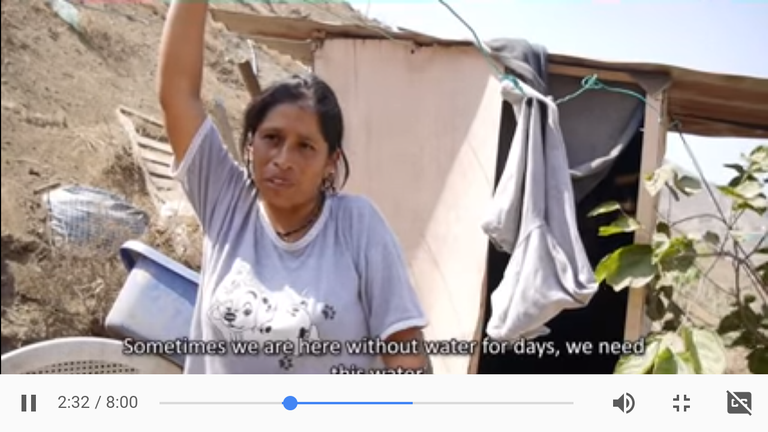
magoo-2 found a series of multi accounts of a same owner is following your articles to cheat your generous rewards.
magoo-2 found these accounts are suspicious & can be multi accounts of a single owner. Conclusion is based on last 30 days transactions:
@anik1998
@anikearn
@anikhassan007
@anik-hassan
@fazlehassan
@kinggo
@shuvrokhan
@rahuljoy
@sohelkhan007
@rockykhan
@alex-linda
@sportslover
@shanto62
@nodald-pump
@shikto
@fariha1752
@yanafariha
magoo-2
Check our latest multi comment spam update report
Which we want all things has included in nature. But I have no that eye to see that things. Your valuable post really appreciable . Good work @donkeypong . Keep it up. Thank you very much for sharing this post with us.
This great technology ,I appreciate this nature..keep it up my dear friend.....
Fog Harp and the secret of nature is amazing.
Goosebumps I read and watched the video.
Awesome!
Thanks!
the Fog Harp can gather three fold the amount of water as different frameworks. Similarly as with any new creation, it most likely needs all the more testing, however this isn't an extravagantly complex gadget. What's more, once the Fog Harp is delivered as a workable item, ideally the cost will be moderate for individuals in creating nations. These haze harps could assist convey clean drinking water to territories that might not have it, as long as they have mist.
Regard @donkeypong, your explanation is very complete. Such problems are not just happening in your country. In my country also experienced a similar thing. Especially the areas of Java and Nusa Tenggara. Water shortages or droughts occur in a number of regions in Indonesia. All of that is because the forest is cleared. So that the trees that had functioned to store water and absorb the pollution are no longer there. Even in an area also made mines such as coal mines. Thus causing aridity. And there was a problem as you described above. Hopefully there fore the best solution to solve this problem, both in your country and in my country that is Indonesia. Thank you for sharing. My best regards @willyanah
nature related content, really its a superb content.Thanks for your share!
There are people who really think that this life is the main thing. After this, nothing. They ask themselves why fuss about living the Godly life. For after this backstage is nothingness – thin air. But what these people miss is the fact that no matter what there will be a performance, and a stage. How we tune our lives will determine how we will leave the stage.
Analysts at Virginia Tech have built up a 'haze harp' equipped for gathering three times more water than a regular 'haze net'.
Mist getting may seem like a thing of imagination, however in bone-dry and semi-bone-dry territories which endure water shortage all through summer, unadulterated water is here and there gathered from haze utilizing 'haze nets': extensive bits of canvas or work. As beads of water are gotten on the vertical canvas, they stream downwards, blending and falling into a trough at its base.
With an expected 66% of the total populace living with extreme water shortage for no less than one month a year, mist nets have demonstrated an important methods for social event this fundamental asset since the 1980s. Be that as it may, introducing immense mist nets in the wide open to gather water is unrealistic and past endeavors to gather water from mist on an extensive scale have demonstrated unsustainable.
I like this nature
Thanks for sharing technology
oh great this post.
@calitoo
Nature has its own unique way to help us.
Hi, @donkeypong
This post is selected and upvoted by free-upvote bot @topbooster
but i like queen song donkey ping [tom]
the story of a big tree problem near the house was remembered in the past near my house there is a big tree whose name is a mangosteen tree .. at the time the tree is fruitful I often go up to pick the fruit ..
amazing photography to start with your story is great but most importantly the tech looks very interesting,enjoying to see those videos and contents. It's very informative to me. I'm searching new things about nature. And you posted various & valuable content there.
Seems very interesting. Nice article! Keep up the work.
In case you are interested, please feel free to check out our project -> http://bit.ly/Elysian_Steemit
Wow. I enjoying it. old is gold. Really nice video. Thanks for your presentation.
Hi donkeypong. This is such an interesting read. As you say nature has gone there before us. What amazes me often the solutions are under our noses but we fail to pay attention to the finer details of nature and rely on others for the solutions. Thank goodness for those who bring this information to us with their research and studies
technology can do anything....
Biomimetics has been a thing for a while now. Amazingly we still have a lot to learn from nature.
Beautiful nature photography,
I like a lot, I love nature. Thanks @donkeypong
This is great post,
I seen ever. Very useful, and you share some wonderful photo.
a very great post ... thanks for sharing ... you are very extraordinary @donkeypong
Wow! I've never heard about the fog harp that can pull water from air. Looks like technology is imitating nature, which is actually cool.
Nice post sir
What a great post, reading things like that are worth it
For me, music is an art that can change all conditions.